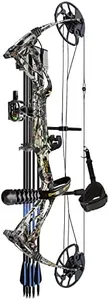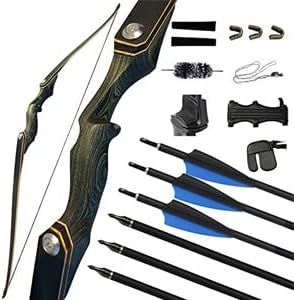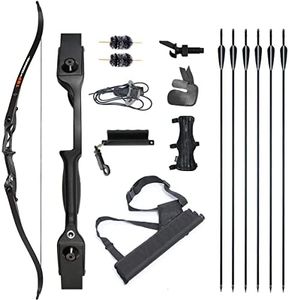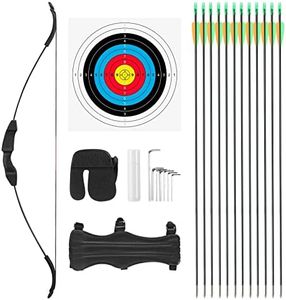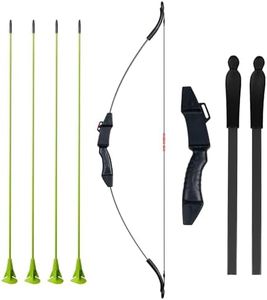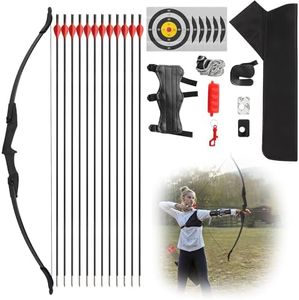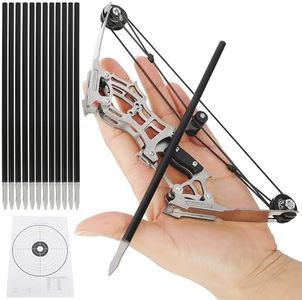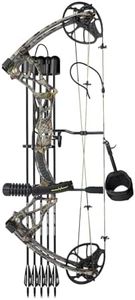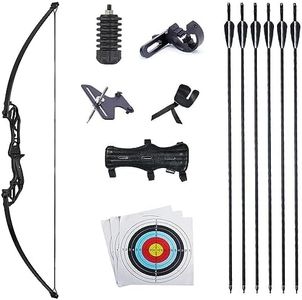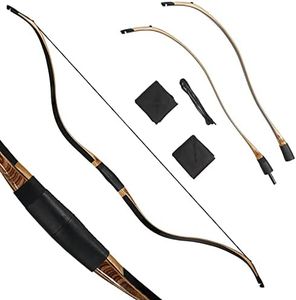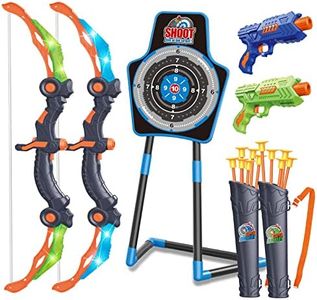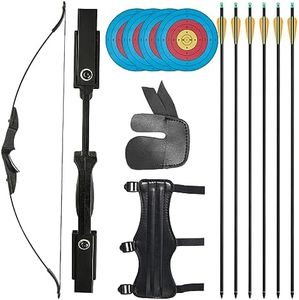We Use CookiesWe use cookies to enhance the security, performance,
functionality and for analytical and promotional activities. By continuing to browse this site you
are agreeing to our privacy policy
10 Best Archery Bows
From leading brands and best sellers available on the web.By clicking on a link to a third party's website, log data is shared with that third party.
Buying Guide for the Best Archery Bows
Choosing the right archery bow can be very rewarding, but the variety of styles and features can be overwhelming if you’re new. The most important step is to consider how you plan to use the bow—whether it's for target shooting, hunting, or recreational archery. Understanding key specifications will help you find a bow that matches your strength, size, purpose, and skill level, leading to a better and safer experience.Draw WeightDraw weight is the amount of force needed to pull back the bowstring to its full draw. It’s important because it directly affects how much energy is transferred to the arrow, influencing both speed and penetration. Lower draw weights (below 30 pounds) are ideal for beginners, youth, and recreational archers, providing easier handling and allowing you to focus on your form. Medium draw weights (30–50 pounds) are suitable for adult beginners and intermediate shooters, especially for target practice. Higher draw weights (over 50 pounds) are typically chosen by experienced archers or for hunting, as they generate more power. To pick the right draw weight, begin with a weight you can handle comfortably and with proper form—don't choose a higher weight just because it seems more powerful, as this can lead to poor technique and injury.
Draw LengthDraw length is the distance from the grip to the string at full draw, and it's essential because using the correct draw length ensures accuracy, comfort, and safety. Short draw lengths are best for youth or those with shorter arms, and can feel more controllable. Standard draw lengths fit most adults, while longer draw lengths are needed for taller people with longer arms. To find your right draw length, you can roughly measure your arm span and divide by 2.5. Choosing a bow with adjustable draw length can also help accommodate your growth or changing needs.
Bow TypeThe main types of bows are recurve, compound, and longbow, each with distinct characteristics. Recurve bows are traditional and simple, offering a balance between power and ease of use, and are widely used in target archery. Compound bows use a system of pulleys to make holding the bow at full draw easier, providing higher power with less effort, ideal for hunting and those seeking modern features. Longbows are classic in design with a single curved piece of wood, typically favored by traditionalists for their smooth draw and historical feel. Choose recurve or longbow if you prefer simplicity or tradition; compound if you want high performance and technology—especially for hunting or if you need extra help drawing the bow.
Axle-to-Axle LengthAxle-to-axle length measures the distance between the two points where the bow’s limbs connect to the cams or pulleys, and it’s particularly relevant for compound bows. Shorter axle-to-axle bows are more compact, making them easier to maneuver, which is beneficial in tight spaces (like hunting in a blind or woods). Longer axle-to-axle bows are more stable and forgiving, which can help with accuracy, especially for target shooting. Your choice should depend on your main use: go shorter for portability and tight spaces, and longer for more stable aiming and target accuracy.
Brace HeightBrace height is the distance from the string to the deepest part of the grip. A shorter brace height can make the bow faster, as the string stays in contact with the arrow longer, but it can also make the bow less forgiving of mistakes. A longer brace height is more forgiving and ideal for beginners, as it can mask slight form errors, though it may result in a slightly lower arrow speed. If you are a beginner or prefer consistency, choose a bow with a longer brace height. Experienced archers seeking more speed may prefer a shorter brace height.
Hand OrientationHand orientation refers to whether the bow is designed to be held in the left or right hand, based on which eye is dominant. Most right-handed people use right-handed bows (held in the left hand and drawn with the right), and vice versa for left-handed. It’s important because using the correct orientation aligns with your dominant eye, improving accuracy and comfort. Test your eye dominance before choosing to ensure you get the right fit.
Bow WeightBow weight is the overall mass of the bow itself, which affects how comfortable it is to hold and carry for extended periods. A heavier bow can provide more stability and steadiness while aiming, but may cause fatigue during long shooting sessions or on a hunt. Lighter bows are easier to carry and handle, especially for youth or when covering long distances, but may feel less steady. Consider how long you’ll be holding the bow and whether portability or stability is more important for your use.
